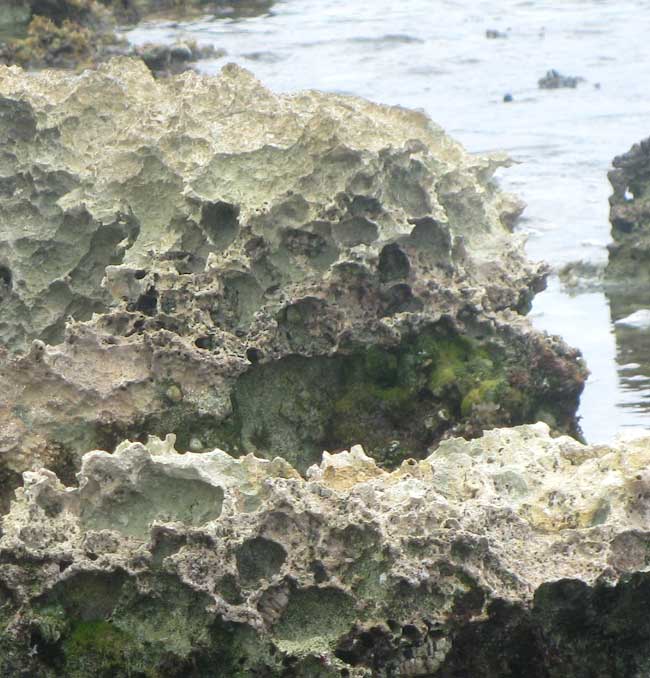Excerpts from Jim Conrad's
Naturalist Newsletter

from the June 19, 2011 Newsletter issued from Mayan Beach Garden Inn 20 kms north of Mahahual; Caribbean coastal beach and mangroves, ~N18.89°, ~W87.64°, Quintana Roo state, MÉXICO
WHERE LIMESTONE MEETS WATER
Maybe more than 99% of the coast here is sandy beach, with limestone jutting into the sea only locally here and there. Where limestone has been subjected to wave action for thousands of years, the stone face often develops very irregular, sharp-edged features, as seen above.
In such spots you'd like to sit and watch fish and crabs in water swirling at your feet, but sitting there is just too painful. Imagine yourself having been shipwrecked, and after a long swim finally reaching shore, and then before you can crawl onto land the waves bounce you among these knife-edged rocks! Or trying to get a canoe ashore through them.
A geological term describing the process of water and/or wind eroding stone into such a pockmarked surface is "alveolization." An alveolus is a small cavity, pit or hollow. An alveolized surface might otherwise be described as honeycombed, though to my mind a honeycombed surface has more structure, like a honeycomb's neatly arranged lines of hexagonal cells.
Limestone is sedimentary rock. It's to be expected that marly mud from which limestone derives would not be perfectly homogenous in terms of composition and texture. Softer parts or those higher in carbonate content might erode at a different rate than harder parts or those with less carbonate content. After billions of wave splashes, you get jagged "alveolization."